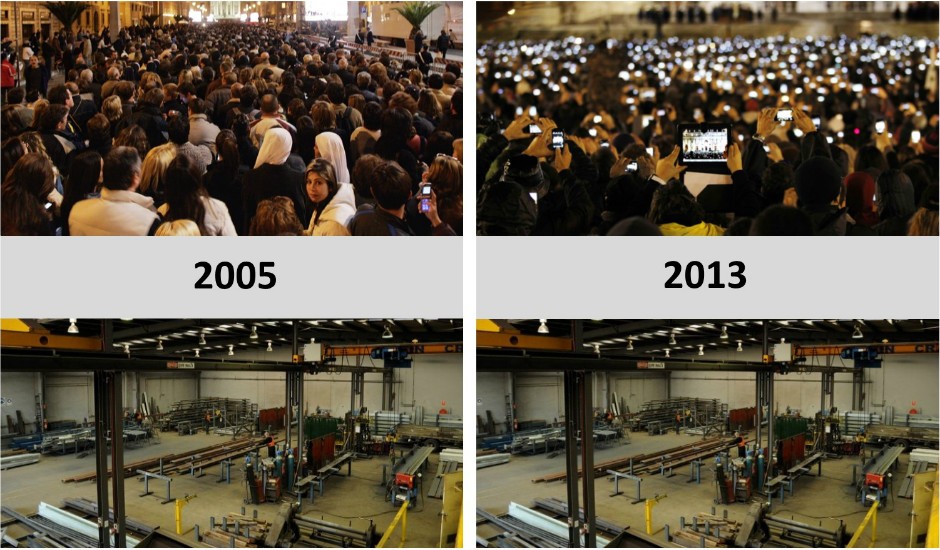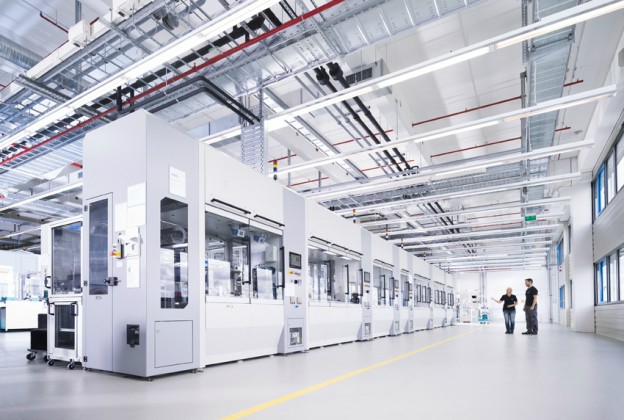Lucas Hof is PhD candidate at Mechanical Engineering, Concordia University. Together with Dr. Rolf Wüthrich and Posalux SA, he has co-developed a novel glass micromachining technology allowing the lean production of ultra-customized glass parts. To this day, Hof has cumulated over 10 years of teaching, entrepreneurial and industrial experience and produced over 30 journal and conference papers and one patent.
Blog post
Technology renaissance
 (source: http://www.businessinsider.com)
(source: http://www.businessinsider.com)
Finalizing this series of five blogs about manufacturing and its advancements, I hope it provided you with some insights on novel manufacturing technologies and the new industrial revolution which is taking place (fourth industrial revolution / Industry 4.0) driven by many technological advancements such as emerging digital (manufacturing) technologies and rapid increasing computational power. This revolution and paradigm change for manufacturing and automation in general is yet at its early stages and we will know its real extend when time is evolving.
That digital technology is advancing at great pace can be shown by the fact that it is still following Moore’s Law, which states that the transistor density in an integrated circuit (a key element for electronic circuits such as used in your PC, smartphone…) will double about every twelve to eighteen months. This implies that the computational power advances at that pace as well, while the power consumed by the chip also drops. To illustrate the speed of this law, Intel’s (computer chip manufacturer) CEO Krzanich illustrated this by the following comparison: “if a 1971 VW Beetle were upgraded at the same speed as a computer chip from the same year, today it would be able to drive at speeds up to 300,000 miles per hour, get 2 million miles per gallon, and cost about 4 cents.” I think this example shows well the difference in progress of different technologies.
To put this difference in context for average small and medium sized manufacturing industries (SME), let’s take a closer look at the image above.
What do we see?
Above we presented the 2005 announcement of Pope Benedict XVI and the 2013 announcement of Pope Francis. We can see very clearly the dramatic increase of use (and full integration) of digital technologies (smartphones, tablets) in our daily lives (which increased even more towards 2018).
Below we see that this digital transition didn’t really happen for typical (SME) manufacturing plants and the way of working didn’t change much.
However, as I discussed in my previous blogs the enormous advancement in digital technologies brought us to the fourth industrial revolution, which will change and disrupt the existing way of fabricating and offering products for all markets.
Some big industries (such as Festo, Siemens…) are leading in adopting this new ‘Industry 4.0’ approach to a large extend of their production plants as they can make the necessary large capital investments to do so. A typical example is shown below presenting the state-of-the-art production plant of FESTO automation in Scharnhausen, Germany.
 FESTO industry 4.0 production plant at Scharnhausen, Germany
(source: https://www.festo.com)
FESTO industry 4.0 production plant at Scharnhausen, Germany
(source: https://www.festo.com)
But what about small or medium sized business (SME) in manufacturing?
How can they benefit from Industry 4.0?
There is not one straightforward answer to this question, but it is sure that SMEs can benefit a lot from the Industry 4.0 approach using available digital technologies and data in a smart way to optimize their production and meet their customer expectations.
Some recent events focusing on Industry 4.0 such as the Summer School on Industry 4.0 organized by Concordia research centers CIADI & CAM, the Winter School on Industry 4.0 hosted by UBC Kelowna and the conference “prévenir le tsunami numérique : un défi pour l’emploi dans la capitale-nationale” organized by Coalition Force 4.0, discussed opportunities and challenges for manufacturing (SME) industries in Canada.
One of the take-aways: implementation of small (low-cost) steps toward more digitalization and automation in existing production already have positive effects on the industry’s performance and it is crucial for manufacturing industries to make this transition to survive and grow in short-term and long-term future.
Many examples were presented where small businesses did add some sensors or other forms of low-cost advanced technology to monitor processes, which resulted for example in less production downtime work. From there, further strategies can be developed to take full advantage of existing advanced technologies for process monitoring, data processing, supply chain optimization to make the industry more ‘Industry 4.0’ and so more future-proof.
An additional important challenge is to find the appropriate skilled workforce and attract young talents for manufacturing industry. I think Industry 4.0 is helping in attracting new workforce as it makes manufacturing a cool and innovative industry again. At the same time, educational institutes such as high-schools, colleges and universities should revise their engineering curriculum to meet the demanded training standards to prepare students well to work in an Industry 4.0 environment. This can only be done effectively in close collaboration with (local) industrial partners.
About the author


